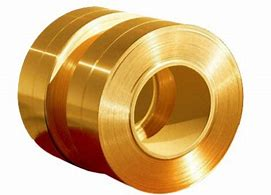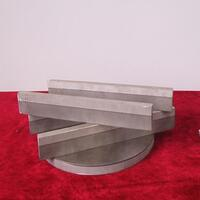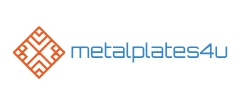1. Introduction
When you hear ‘metal clad,’ your mind might jump to electrical wiring or industrial piping—but one of the most exciting and rapidly evolving uses of metal clad today is in architecture. From sleek urban skyscrapers to rustic countryside homes, metal clad facades are redefining aesthetics, durability, and sustainability in building design. This isn’t just about slapping corrugated steel on a shed; we’re talking precision-engineered systems like corten steel siding, zinc clad dormers, and vertical standing seam metal siding that serve both form and function.

In this article, we’ll dive into how architects and builders are leveraging metal clad wall systems and specialty clad metals to solve real-world challenges—from corrosion resistance in coastal environments to thermal efficiency in extreme climates.
2. What Does Metal Clad Mean in Construction?
Before we get into the niche applications, let’s clarify the metal clad meaning in this context. In architecture, ‘metal clad’ refers to exterior building envelopes where structural or non-structural panels are covered with a layer of metal—often steel, aluminum, zinc, copper, or alloys. These systems can be load-bearing (as in a metal clad building) or purely decorative (like pac clad column covers).
Clad metal meaning also extends to composite materials—such as aluminum clad steel or stainless clad aluminum—where two metals are bonded to combine the best properties of each. For instance, aluminum clad stainless steel offers the corrosion resistance of stainless steel with the lightweight economy of aluminum.
3. High-Performance Facades: Where Metal Clad Shines
Modern architects increasingly turn to metal facade systems for their resilience, recyclability, and visual versatility. Unlike traditional stucco or wood, metal cladding stands up to fire, pests, rot, and decades of weathering with minimal maintenance.
One standout example is the corten steel facade. Corten steel plate develops a stable rust-like appearance over time, eliminating the need for painting while offering exceptional longevity. Though corten siding cost is higher upfront—typically $8–$15 per square foot—it pays off in lifecycle savings and iconic aesthetics. Designers love it for museums, cultural centers, and even luxury metal clad houses.

Similarly, zinc metal siding and zinc clad roofs are prized for their self-healing patina and 80+ year lifespan. A zinc clad dormer not only adds architectural interest but also integrates seamlessly with green roof systems.
4. Specialty Cladding Systems in Action
Beyond broad categories, specific metal clad types are chosen for targeted performance:
- Copper siding ages gracefully into a green patina, often used in historic restorations or high-end residences.
- Exterior corrugated metal siding delivers an industrial-chic look while providing excellent wind uplift resistance.
- Colorbond standing seam and pac clad standing seam roof systems offer clean lines, superior water shedding, and compatibility with solar panel mounts.
- Vertical standing seam metal siding enhances verticality in narrow urban lots, making buildings appear taller and more elegant.
Even details matter: pac clad coping and pac clad hwp (horizontal wall panels) ensure watertight transitions at parapets and edges, critical for long-term integrity.
5. Beyond Aesthetics: Functional Advantages of Clad Metals
Metal clad isn’t just about looks—it solves engineering problems too. In corrosive environments like chemical plants or marine facilities, titanium clad or inconel 625 overlay plates protect underlying steel from degradation. These alloy clad solutions extend equipment life dramatically.

For insulation, aluminum clad pipe insulation wraps HVAC and process piping, reflecting heat and resisting moisture—key in pharmaceutical or food processing plants.
Even in electrical systems, metal clad wire (including cu clad wire or aluminum clad steel wire) provides enhanced grounding and mechanical protection in commercial builds, especially in regions like Pennsylvania where codes favor robust conduit systems.
6. Material Innovation Meets Sustainability
The rise of recycled content in clad metals aligns with green building standards like LEED. Aluminum clad sheet and stainless steel metal plate often contain 30–90% post-consumer scrap. Moreover, nearly all metal cladding is 100% recyclable at end-of-life.
Advanced alloys like 6061 T6 aluminum plate or 316 stainless steel plate offer strength-to-weight ratios that reduce structural support needs—cutting embodied carbon. Meanwhile, electroless nickel plating and chromium electroplating enhance surface durability without toxic byproducts when done responsibly.
7. Choosing the Right System: Cost vs. Performance
Not all metal clad is created equal. A steel clad house using mild steel plate may cost less initially than one with corten steel plate, but long-term maintenance could tip the scales. Similarly, while aluminum diamond tread plate adds slip resistance to walkways, stainless steel checker plate might be better near saltwater.
Builders sourcing materials should consider local availability—searching ‘steel plate near me’ or ‘aluminium checker plate for sale’ can impact lead times and budgets. Thickness matters too: 1/8 inch steel plate suffices for non-structural accents, while 3/16 steel plate or thick steel plate may be needed for load-bearing elements.
8. Conclusion
From corten steel siding to pac clad column covers, metal clad has evolved far beyond its industrial roots. Today, it’s a cornerstone of high-performance, sustainable, and visually striking architecture. Whether you’re designing a steel clad building for a tech campus or specifying zinc metal siding for a boutique hotel, understanding the nuances of clad metals unlocks smarter, longer-lasting solutions. As material science advances and circular economy principles grow, expect metal clad to play an even bigger role in the buildings of tomorrow.
Our Website founded on October 17, 2012, is a high-tech enterprise committed to the research and development, production, processing, sales and technical services of ceramic relative materials such as Metal. Our products includes but not limited to Boron Carbide Ceramic Products, Boron Nitride Ceramic Products, Silicon Carbide Ceramic Products, Silicon Nitride Ceramic Products, Zirconium Dioxide Ceramic Products, etc. If you are interested, please feel free to contact us.
